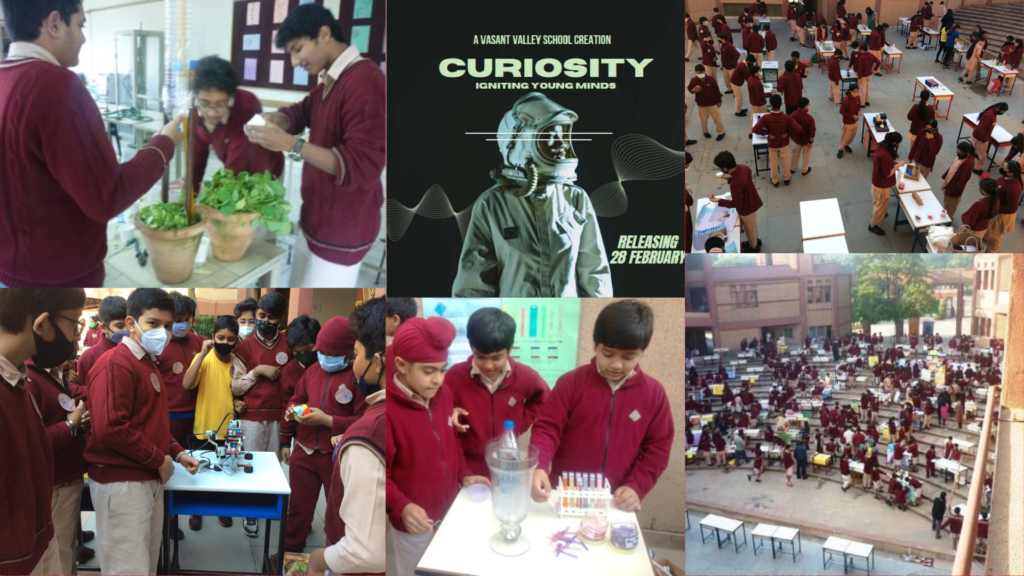Arnav Azad
It’s been such a long and arduous journey for Science. On a tireless trek since the advent of humanity, it has been evolving perceptions and knowledge from blind belief to an absolute desire for the truth since forever. Our oldest ancestors had only fire, wheels and a fear of the unknown, but science paved the path to the future: Copernicus and Gallileo refuted the church to catch the first glimpse of space, Newton discovered gravity and created the framework for classical mechanics, Dalton and his discovery of the atom changing alchemy to true chemistry, Einstein with his theories of relativity flipping classical physics on its head and Bohr and Plank’s quantum mechanics breaking relativity through probability and raising as many questions as it seems to solve.
The only constant trope in this eternal epic seems to be the fallibility of fact: no matter how obvious something might seem, one can never be sure of the nature of reality. Yet simultaneously, the tale reminds us that curiosity, breaking convention and placing logic above bias to answer the unanswerable, the quintessential essence of discovery itself remains unblemished.
And thus, with the intention of inspiring the same unbridled curiosity, I will write about the questions science is still trying to figure out. Perhaps this general introduction will lead to some progress in science as a whole. Who knows who the next Michael Faraday will be?
Dark matter, dark energy, the Expansion of the universe, black holes, and Exotic matter A discussion on ‘what we don’t know’ cannot begin without acknowledging these superstars of physics research. In a nutshell, dark matter is the stuff that makes up most of our universe – just think of it as regular matter except it doesn’t interact with any form of light (EM forces) therefore we can’t see it, but it still has mass. Without it, there wouldn’t be enough gravitational forces to hold galaxies together and everything would just be flying apart and freezing up due to lack of heat. We still don’t know whether or not it exists, but mathematically it seems real enough. Next up we have the ‘entirely-unrelated-to-it’s-namesake’ dark energy which we pretty much know nothing about: Researching into the origin of our universe, modern scientists realised that stuff seems to be drifting apart faster and faster, i.e. the universe is expanding and no one seems to know why. There are multiple conjectures but none have had concrete proofs including a cosmological constant (when space spreads out, the absence of matter starts making physics weird) and quintessence (a scalar field like Higgs boson) Dark energy is the catch-all term for these theories and is defined as the energy that causes this expansion. Onto blackholes: stars are really massive you know. But when big enough stars die, they end up creating extremely dense celestial bodies, that are so massive that their gravity doesn’t even allow light to escape from their influence. This leads to some weird conundrums like information being ‘destroyed’ when black holes evaporate and we don’t really know what happens in their singularities, leaving lots of room for conjectures. Finally the controversial exotic matter, the backbone of sci-fi flicks like Star Trek and technically-accurate time travel. Basically, it’s regular matter, except with negative mass. So, it show properties that can break physics, eg. going over the speed of light. But we have no idea whether or not it’s real, maybe it’s hiding in some faraway corner in deep space. But its theoretical possibilities are endless and worth considering.
Relating Quantum Physics to Relativistic Physics and the Theory of Everything This is a fun one: On one hand, Einstein reimagined gravity and how matter interacts or large scales with his theories of general and specific relativity. On the other hand, quantum mechanics seems to say that the smaller we go the less we know what will happen: electrons can exist in multiple places at the same time, we can never predict exact positions and barriers can be passed without expending energy. But the problem with these theories is that while they both work great on their own, they don’t offer any room for coexistence. Relativity and gravity seem to fall apart in the quantum realm and massive relativistic objects seem to disobey micro laws of quantum mechanics. Thus, the current great search is for the unification of these two theories to a supposed ‘theory of everything’ and the understanding of quantum gravity. Similarly finding, the ‘impossible’ mathematically defined non-perturbative (that does not depend on probability) model for quantum mechanics would be revolutionary. The Limits of Consciousness and a Digital Upload Onto some slightly hand-wavy stuff. As much as science might have advanced, we still have no idea what consciousness is. While we have understood the brain and the nervous system greatly, we have yet to replicate it in an inorganic system. Therefore the idea of taking a human brain and making it immortal by ‘uploading’ it online seems to be an interesting avenue for research and better understanding ourselves and the world around us. And the limits of such a computerised model that can replicate consciousness: is there a real limit for memory, what would a self-aware entity with perfect recollection look like and so on. It is a great avenue for bio-chemical research as well.
Laplace’s demon, Determinism, Thermodynamic/Quantum irreversibility and Time Travel If I were to try and objectively describe science, it would be something along the lines of ‘predicting how the universe behaves based on what we already know about it.’ So, it seems inherently predictive in nature. Then it wouldn’t be a big stretch to say: if there were a ‘demon’ that knew absolutely everything at a certain point of time, like absolutely everything (and can somehow organise that data), then it would be able to predict exactly what would happen in the immediate future, right? This is exactly the question ‘Laplace’s demon’ asks us to ponder upon. Though this almost borders on the philosophy of absolute fate, it is still a concept worth scientifically questioning as it can potentially solve logical conundrums in various paradoxes including Grandfather paradox (time travel) [not considering the quantum explanation] and Fermi paradox. Sure, the theory is disputable with arguments including thermodynamically irreversible and quantum-irreversible processes (that cannot be predicted at least as of yet), or being able to predict the memory of the future demon. But scientists still argue that it could be partially possible since we have retraced much of the past before life even existed on earth and have even been able to even conjecture the end of the universe by analysing the data we have. Thus the creation of such a model is an exciting though ‘implausible’ field of conjectural research. [Determinism is another term for such theories which says that the future can be exactly predicted] Sonoluminescence as a force to power fusion To end the article, we can talk about something more physically ‘real.’ When you send very intense sound waves in liquids (especially viscous ones) to create a bubble (the process is called cavitation), the low-pressure region formed is very unstable and immediately collapses in microseconds and produces light of various frequencies. What is so unique about this phenomenon is that the inside of the bubble seems to reach insanely high temperatures like 20,000 C° (to put that in perspective the surface of the sun is around 5600 C°) These kinds of temperatures can have various applications including theoretically powering nuclear fusion. But the problem is in the why – although multiple theories have been proposed as of yet none of them have been proven and require extremely ideal positions eg. that the cavity is exactly spherical. Thus specialists across the world are working to try and interpret this bubble mechanics and hopefully understand the phenomenon.

